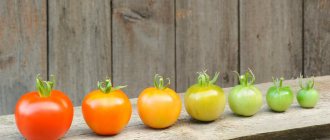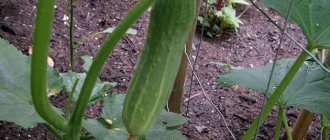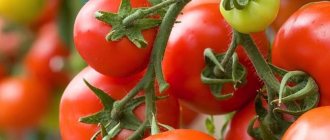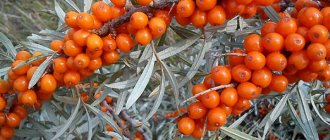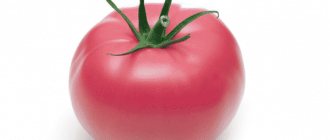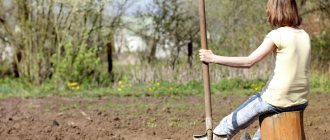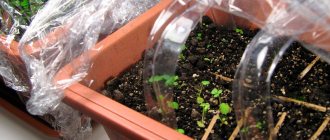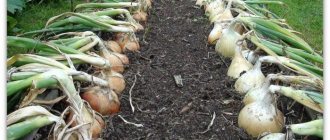Freezing
You can store strawberries in the freezer for up to 1 year, but since this berry consists of 90% water, there is a risk that after complete defrosting it will lose its shape.
Before freezing, remove the sepals, wash and dry the berries. Strawberries can be frozen like this:
- Entirely. In this case, you can simply serve it on the table or use it for chocolate fondue. Since thawed berries are softer than regular ones, they are more difficult to cut into neat slices, but they are easy to mash into puree. To protect the preparations from becoming soggy, you can dip them in yogurt or melted chocolate in advance - you will get a ready-made candy.
- Sliced into slices. Neat pieces are well suited for decorating baked goods and other desserts. In addition, in this case the strawberries will freeze more evenly and faster.
- In the form of puree. It is used for smoothies or cocktails, as a filling for baked goods, etc. Even soft berries are suitable for this preparation.
Whole berries or slices can be placed in freezer-safe plastic or glass containers or ziplock bags. To store puree, use ice or ice cream molds, as well as portion cups.
You can make many desserts from defrosted puree.
Prepared strawberries can be poured with sugar syrup before freezing. It helps to better preserve the taste, aroma and shape of the fruit, but in this case they turn out to be very sweet, which not everyone likes. In addition, it will be more difficult to use part of the workpiece.
To prepare the syrup, dilute sugar with water in a 1:1 ratio. Chill the mixture in the refrigerator, then pour over the berries so that they are completely covered. This syrup can also be added to puree; in this case, about 4 parts of sugar are used for 5 parts of berries.
You can also store strawberries in pectin syrup - it keeps the shape of the berries worse, but does not make them too sweet. The proportions for its preparation should be indicated on the packaging.
If you plan to store strawberries without syrup, first arrange the berries in a single layer on a tray and freeze for several hours. Only then transfer them to a container, otherwise they will stick together. Leave about 1.5-2 cm of free space - when the berries freeze, they expand.
To prevent the berries from freezing, first freeze each one separately.
The berries need to be defrosted gradually in the refrigerator. Rapid defrosting, such as in the microwave, will make them too soft. It is advisable to eat them while still cold.
Benefits for the body
Barberry contains many vitamins, minerals and other equally useful substances (ascorbic acid, carotene, tocopherol, organic acids, tannins), which have a positive effect on the human body.
Medicines are made from the plant that help with a number of diseases, namely:
- pain in the heart;
- high blood pressure;
- hemorrhoids;
- dysentery;
- diseases of the liver, kidneys, gall bladder, spleen, mouth, eyes;
- malaria;
- uterine bleeding;
- pleurisy;
- elevated body temperature;
- rheumatism;
- diabetes mellitus;
- tuberculosis;
- scurvy.
In addition, barberry has a laxative, antiseptic, tonic, antipyretic and diaphoretic effect. The plant is also able to eliminate severe wet coughs by removing phlegm from the bronchi.
At what age is it allowed to give barberry to children? Experts do not recommend including plant berries in children’s diets before the age of 12. Eating fruits can cause poisoning in children.
Women
Barberry will be useful for women both fresh and as part of decoctions and cosmetics. Berry face masks rid the skin of age spots and also remove dead cells.
Barberry-based decoctions improve general condition during menstruation, relieving lethargy. Also, folk remedies based on barberry increase the level of hemoglobin in the blood.
In addition, barberry is useful for weight loss. It is used to prepare compotes and juices that help burn fat and improve metabolism.
Barberry is contraindicated not only in the early stages of pregnancy, but also during the entire period of bearing a child. The product contains alkaloids that can cause contraction of most muscles. Eating even a small amount of barberry during pregnancy can cause miscarriage, swelling or bleeding.
Men
It is useful for men to eat barberry and drink decoctions based on it to speed up sperm motility (especially if there are problems conceiving a child), get rid of inflammatory diseases of the genitourinary system and prostatitis.
In folk medicine, to get rid of impotence, a special decoction based on rosehip and barberry is prepared, which increases blood flow to the pelvic organs, thereby increasing potency.
Berry drinks are also recommended to drink when playing sports. A barberry-based drink eliminates the feeling of fatigue and saturates the body with energy and strength.
When to collect barberry and how to dry the berries, fruit storage technology
But in order for the use of fruits to give a positive result, you need to know when to collect them.
Barberry berries are included in diets for weight loss, consumed to strengthen the immune system, and added in pickled form to fried or stewed vegetables. The fruits are used to make masks that smooth out wrinkles on the skin and remove dark circles under the eyes. Decoctions are prepared from leaves rich in ascorbic acid and carotene, which promote:
- stopping bleeding;
- eliminating nausea;
- excretion of bile.
To ensure that the leaves, wood and fruits do not lose their healing properties, they need to be harvested at certain times; they are collected at different times of the year.
Unripe barberry is dangerous to humans because it contains poison. In mid-latitudes, fruits begin to be harvested no earlier than the end of August. You can pick the berries from the bush in late autumn after frost, but overripe barberries leak juice and quickly spoil.
In the underground part of the thorny bush, most of the useful components accumulate by autumn
To prevent the plant from dying, carefully use a shovel to separate no more than 1/3 of the root shoots. They are not washed, but dried and stored in burlap or wrapped in newspapers
The next harvest of this barberry can be carried out no earlier than after 5 years.
When the bush begins to secrete sap, which in mid-latitudes occurs in the second month of spring, medicinal raw materials such as bark are prepared. It is removed from the shoots, laid out in the attic in a thin layer and turned over several times to dry everything.
Leaves
At the end of spring, the buds on the barberry open and the bush blooms. At this time, you need to cut off young branches no more than 10 cm long with tender green leaves and dry them all together, washing them from dirt.
In some countries, such as Iran, where barberry cultivation is one of the thriving agricultural sectors, the berries are often collected from freshly cut branches. This method makes it possible to rejuvenate the bush and use the bark and leaves as medicinal raw materials.
After harvesting, the barberries should be sorted out, rinsed under running cold water, and placed in a colander in a thin layer. There is no need to mix the berries with your hands or a spoon, as this can damage the thin skin.
You can collect barberry not only on your personal plot, but also in the forest. The plant is frost-resistant and can easily withstand the harsh Russian climate. Barberry is most often found in the forest-steppe of the North Caucasus region, as well as in the Primorsky Territory. You can collect berries from wild bushes only away from roads, large industrial enterprises and other objects with difficult environmental conditions.
You cannot collect barberry near highways and railways. The fruits are cut along with thin branches or picked from the bush.
How to preserve berries
Barberry berries are prepared in different ways for the winter. The fastest way is to freeze. All useful qualities are preserved.
They are frozen in the same way as all other berries. Before storing in the freezer, rinse and dry from water. Pack into freezer bags or containers.
The second method is drying. Dry in the oven, air or electric dryer. The drying temperature should not exceed 50-60 degrees. Dried berries are stored in a glass container or box. Be sure to close the lid.
The third way is to grind it with sugar or honey. Then place in clean, dry jars with a lid. Sugar is taken in the ratio of 1 part fruit to 2 parts sugar.
Another way is to pour a salt solution. The solution is prepared at the rate of 200 grams of salt per 1 liter of chilled boiled water. The jars are covered with lids and stored in a cool place. These berries are perfect for making sauces and marinades.
Plant description - how to recognize a shrub?
Common barberry is a thorny shrub that grows 2.5 meters in height. The barberry root is quite strongly developed, has a shaft and many shoots. The stem has spines that distinguish the shrub from other types of trees. The trunk of the plant is covered with grayish thin bark.
Barberry leaves are elliptical, dense, with small and short petioles. The leaf reaches 3-4 cm in length. The plant blooms with small yellow flowers, which are collected in large inflorescences. Each inflorescence reaches 6 cm in length.
Each flower is endowed with a six-membered perianth, which has 6 stamens and one pistil. Barberry fruits are small oblong berries, reaching a length of 12 mm. The color of the berries of each tree variety is slightly different - the shade ranges from pale red to deep burgundy. The berries resemble dogwood in appearance.
Common barberry blooms in mid-May (in cold areas flowering lasts until June). When to collect fruits and leaves of the bush? The fruits can be collected in August-September - at this time they will be fully ripe and ready for harvest. If the berries are not picked, they will remain hanging on tree branches until the beginning of winter.
Each plant family can treat many diseases
Important: the shrub has about 500 species, which differ from each other in fruits, root system, height and region of growth. Dried barberry is used only as prescribed by a doctor - the use of decoctions and honey from the fruit leads to an allergic reaction, so self-treatment should be avoided
In addition, this technique is harmful to the body and aggravates the disease you are curing.
Types of candy bush
In botany, there are at least 500 species of barberry, some of which bear fruit, while others serve as decoration. The shrub is characterized by fast growth and low soil requirements. In the sun, the leaves take on a purple color, while in the shade they develop a greenish tint. Glossy yellow, reddish and golden inflorescences begin to appear in May and transform into red or black oblong (1.2 cm) or spherical fruits in July-August. The main thing in caring for any type of barberry is to prevent the soil from becoming waterlogged. Each species differs in the location and number of leaves, flowers, the presence of thorns and berries:
- Berberis vulgaris is a common dark green barberry bush native to Central and Southern Europe. It is distinguished by erect brownish-gray shoots. A popular variety is Atropurpurea with golden-yellow flowers and reddish underneath against a background of dark purple foliage.
- Barberry Thunberg is a Japanese-Chinese cousin of the common barberry, characterized by small leaves and intolerance to frost. Not subject to rust. Easily tolerates urban conditions. There are many varieties: dark red Atropurpurea and silver-edged Argenteomarginata, Rose Glow and yellow Aurea, pale green Green Carpet and light green Kobold.
- Berberis koreana is a common round-fruited species in Korea.
- Berberis heteropoda/sphaerocarpa is a heteropodous or spherical-fruited barberry native to Central Asia, Mongolia and Western China.
- Berberis x ottawiensis is an Ottawa hybrid between the Thunberg and the common dark purple barberry, produced in Canada. It is perfect for gardeners because it is larger than other species, grows very quickly and is resistant to such a dangerous pest - powdery mildew.
- Berberis cretica is a Cretan species of barberry, the berries of which are covered with a bluish coating.
- Diels barberry is a winter-hardy species native to Western China.
Harvesting method
The dug up roots are carefully shaken off soil and other impurities, while removing blackened and rotten parts. The most valuable part of the root is the bark; it easily peels off when cutting the roots. In order not to lose valuable raw materials, burlap is placed when cutting. Washing in water is not allowed, since berberine (the main medicinal substance) is highly soluble in water and is therefore lost during washing. The roots are dried in a well-ventilated area, under canopies or in dryers at a temperature of 45–50°C. The color of the dried roots when broken is lemon-yellow. The taste of the raw material is bitter, the smell is weak and peculiar.
The bark is collected during the period of sap movement, when it is easily removed. Make circular cuts with a knife, at a distance of 10–15 cm from one another, connect longitudinally and remove the bark.
Barberry leaves are harvested in the budding and flowering phase, then dried. Collecting damaged or rusty leaves is not allowed. The smell of the leaves is peculiar, the taste is sour.
Shelf life of leaves is 2 years, roots are 3 years.
How to collect and store
The peculiarity of barberry is that it is a very branched and thorny shrub. Therefore, picking berries and other parts of the plant should be done wearing long sleeves and gloves.
Then the fruits need to be washed and placed in a colander to drain the water. For further freezing, they must be sprinkled generously with sugar and placed in bags or plastic containers. In case of drying, spread the berries on a baking sheet in one layer and keep them at a temperature of +40 °C, and subsequently increase the mode to + 60 °C. Readiness can be determined if the fruits do not stick together when squeezed.
The leaves of the plant need to be collected together with young shoots, since the plates are very delicate. The length of the blanks should be no more than 10 cm. After collection, leaves with shoots should also be washed to remove dust and dirt, and then poured in one layer to dry in a dark place in the fresh air without exposure to direct sunlight. It is recommended to carefully collect the bark from the shoots using a knife. In the future, it must be dried in the same way as the leaves.
The roots of barberry must be dug up with a shovel and then thoroughly cleared of soil, but not washed. After this, they should be cut into pieces 10-15 cm long and then split into fibers. Such raw materials must be dried at a temperature of + 50 °C.
The shelf life of frozen berries is one year. The dried product retains its healing properties for three years. But to do this, you need to put it in clothes bags and keep it in a cool, dry, dark place.
Jam retains beneficial properties for 10-12 months
Planting and propagation
If you want to see a lush, bright bush, you should pay attention to planting and placement. Choose a well-lit location and fertile, well-drained soil.
When planting several plants, maintain a distance of 1.5 - 2 m between them. Planting is recommended in spring and autumn. Prepare planting holes half a meter wide and 0.4 m deep. If the soil is poor, fill the holes with a mixture of topsoil soil, humus or compost (1 bucket), superphosphate (150 g) and potassium salt (50 g).
The methods for propagating barberry are varied. Each of these methods requires special effort:
- In order to obtain barberry from seeds, it is necessary to collect the fruits. Squeeze them out, sift them through a special sieve and then dry them a little. Sow in autumn in furrows 1 cm deep maximum. If you sow in spring, carry out stratification for 2-5 months at 2-5°C. As soon as the shoots and leaves appear, thin them to a distance of 3-4 cm from each other. The transplant can be carried out after two years.
- Semi-lignified branches 15-20 centimeters long with 3-4 good buds are cut from the mother bush. Make the top cut above the kidney, and the bottom cut two centimeters below the kidney. Set up a small greenhouse for the cuttings. You can build a box for them and cover them with a transparent jar. Replanting is permissible after good rooting.
Rust disease.
Signs.
This is its most common disease. It should be taken into account that a number of species (common barberry, Siberian barberry and a number of others) are the intermediate host of rust fungus that attacks cereals. For this reason, growing them near grain fields is unacceptable. In spring, bright orange spots appear on the young leaves of the bushes on the upper side, and orange convex pads of aecia form on the lower side, in which a huge mass of spores ripen, spreading to both wild and cultivated cereals. With severe development of the disease, severe drying out and leaf fall are possible.
Struggle.
Considering that the source of infection is usually cereals, rust prevention can be considered the fight against wheatgrass, bluegrass and other weeds from this family. Spraying with a 1 - 1.5% solution of colloidal sulfur or 1% Bordeaux mixture is effectively used (the first time after the leaves bloom, then twice every 20 days). Thunberg's barberry is not affected by rust.
Sometimes leaves can be affected by spots caused by pathogenic fungi. They all have a narrow specialization. Spots of different shapes and colors form on the leaves, the leaves dry out prematurely and fall off. In this case, the decorative properties of the bushes are lost, biochemical processes are disrupted, the shoots do not ripen well, as a result of which they may freeze in winter.
For control, it was usually recommended to use some fungicides: among chemicals, copper oxychloride (30–40 g per 10 l), 2 treatments, before and after flowering, as well as Abiga-Pik (40–50 g per 10 l), are acceptable, and at the same time carry out 2 treatments per season. However, these drugs are highly poisonous, so for the sake of preserving nature and your own health, it is better to use biological products, for example, Alirin-B. This drug can be used for up to 3 preventive and 3 therapeutic treatments (spraying), because it is harmless.
Growing
To plant barberry bushes, you need to choose a good place, perhaps a little dark. Preferably with fertile soil. You need to immediately decide how you want to plant the barberry - in the form of a single bush or a reliable “living” wall.
It is recommended to purchase seedlings from trusted sellers or specialized stores
Be sure to pay attention to the appearance of the seedlings. They must be strong and healthy
The optimal time for planting is the end of March - April. First, you need to dig a hole for one bush - 40 by 40 cm. For clay soils, dig a hole deeper and drain the bottom with crushed stone or gravel.
Take care of fertilizer. When planting you can enter:
- compost, rotted manure or humus;
- lime – 0.25 kg;
- potassium salt – 10 g;
- superphosphate – 25 g.
Plant the seedlings, cover well and water thoroughly. Be sure to compact the soil well and mulch the top layer.
Care
The main thing in care is regular pruning. Bushes need to be shaped in the spring and twice in the summer (in June and August). Barberry tolerates pruning painlessly and has obedient branches. As a result, shrubs can be given any shape.
You need to water regularly, but barberry practically cannot tolerate excess water. It is recommended to loosen the soil every time after watering.
From the second year after planting, you need to feed the barberry - water it with water and urea (30 g per 10 liters of water). Next, it is recommended to use complex fertilizers, for example, the popular Kemira all-purpose fertilizer.
During the first 4-5 years, barberry must be covered for the winter with spruce branches or dry leaves.
Major pests
If you notice curled or dried leaves, you may have barberry aphids. To combat it, you can use chemical or natural means, such as a soap solution. To prepare it, you should dissolve 250-300 grams of laundry soap in a bucket of water and spray each bush.
A common disease is powdery mildew. Main symptoms: powdery coating on the leaves, improper formation and unhealthy appearance of the bush.
For control, spraying with a solution of colloidal sulfur (0.5%) is effective. Be sure to cut off and burn severely affected branches.
Methods for drying barberry
Drying vegetables, berries and fruits is considered the most optimal way to preserve all the beneficial properties of the fruit. This method of preservation ensures the preservation of vitamin C, which is present in barberry berries. Leaves, shoots, roots and bark can be dried in the traditional way: the underground and above-ground parts of the plant are laid out in an open space or special drying devices are used.
The following plant varieties (common species) can be eaten:
- Atropurpurea;
- Dulcis;
- Asperma;
- Lutea.
Barberry, Canadian and Amur barberry also have edible berries.
In the oven
Most modern ovens are equipped with a “drying” function. In a convection oven, excess moisture evaporates faster: fruits and other parts of the plant are blown with air from all sides. If there is no fan in the oven, the evaporated moisture remains inside, so the oven door is not tightly closed when drying fruits. It is necessary to periodically change the baking sheets and turn the berries themselves.
After the fruits have reduced in size, they can be removed from the oven and transferred to a dry glass container. When drying barberry in the oven, you need to adhere to the temperature regime. Optimal - no more than 80°C. To keep the berries soft, drying begins at maximum temperature, gradually reducing it to +35...+40°C. In this case, the surface will remain soft and the flesh will remain moist.
The duration of the procedure is 120-180 minutes. The dried roots and aerial parts of the plant are laid out dry on a baking sheet. It is necessary to heat the oven to 45°C, place the raw materials on the grill and close the door. To check the readiness of the raw material, you need to break the root: its core must be dry. To the touch, dried barberry berries spring slightly under your fingers, without releasing juice.
In an electric dryer
Long-term storage of fresh barberry fruits is impossible; they contain a large amount of liquid. The operating principle of an electric dryer is based on the device’s ability to evaporate excess moisture from berries due to air circulation. The fruits do not change their appearance when dried; they decrease slightly in size.
Kitchen gadgets differ from each other in power: the smaller it is, the slower the fruit will dry. It is preferable to use infrared devices: the rays penetrate 10 mm into the structure of the berry, drying occurs at a low temperature. It is better to air dry the bark, leaves and other parts of the plant.
The device consists of several elements:
- lid;
- mesh trays;
- fan;
- a heating element.
Depending on the model, the last 2 elements may be located in the lid of the gadget or at the base of the electric dryer. If the heater is built into the lid of the device, the drying procedure is reduced by almost 2 times due to the fact that air blows over the products from all sides. The more trays in the dryer, the easier and faster it will be possible to prepare a large number of barberry fruits. Periodically you need to check that the berries located on the upper tiers do not dry out; you will have to change the trays.
Between the berries you need to leave a distance of 5-7 mm, which will ensure the flow of warm air to each fruit. The drying chamber differs in power from an electric dryer, but the operation of such a kitchen gadget is more difficult. The conservation process itself takes place in several stages:
- the fruits must first be washed with running water;
- place them on a paper towel;
- after the excess moisture has drained, the berries are laid out on mesh trays;
- Plug in the electric dryer.
You can line the trays with parchment paper to prevent excess liquid from getting into the heating element. After 3 hours, the berries are ready for consumption or storage.
On air
The most accessible and cost-effective method of drying fruits and other parts of barberry is air-thermal. Berries, leaves, roots and branches are laid out on clean newspapers in a well-ventilated area. It is not recommended to dry raw materials in the open sun - most of the beneficial properties will be lost in this case.
Barberry berries can be dried outside, in the shade, without prior blanching (soaking in hot water). In rainy weather, raw materials will have to be removed indoors. From time to time you will have to turn the fruits over and change the newspapers underneath them. The method is accessible and simple; the use of auxiliary equipment is not required. Drying occurs naturally (without the participation of chemical reagents).
The fruits dry completely within a few weeks. The final result depends on air humidity. Fruits lose their aroma and attractive appearance after air-heat drying. You can prepare seeds; they are collected at the end of November.
How is it different from other berries?
Externally, common barberry is similar to other berries, such as goji, dogwood and thunberg barberry. However, there is still a difference between these plants. It manifests itself in the smell and characteristics of cultivation.
From Barberry thunberg
Common barberry, unlike thunberg, is not an ornamental crop. In addition, some species can reach 4 m in height, while the height of the thunberg does not exceed 2.5 m.
In thunberg, the color of the fruits can be varied (orange, coral, scarlet). The berries of barberry are always scarlet.
Thunberg, unlike the ordinary one, is resistant to infections (powdery mildew, rust) and dry climates, and is not picky about the type of soil.
From dogwood
Dogwood and barberry differ from each other in all respects.
- These plants belong to different families, so they have different chemical compositions of berries and other parts.
- Barberry fruits have several soft small seeds (about 3-5 pieces), and dogwood contains only one seed, hard to the touch, oblong in shape and large in size.
- Although both plants are used in folk medicine for the preparation of medicines, they are used to treat various diseases.
Even in color, dogwood differs from barberry. You will notice that the first one has a more saturated shade.
From goji berries
It is quite easy to distinguish barberries from goji berries. The fruits of the former are round, while the goji berries are oblong. Barberry berries are colored a rich dark burgundy, while goji berries have a predominantly carrot-red color. Plants also differ in taste. Barberry is sour, and goji berries are sweetish with a slight hint of sourness.
Goji is grown only in China, but barberry can be found everywhere. The leaves of the latter have an oval shape, while those of goji are oblong. The flowers of barberry are yellow, and those of goji are purple.
After drying, goji berries retain their color and original shape. Barberry becomes round and dark.
The difference between the two berries is also the price. Barberry is much cheaper than goji.
Application of fruits
The range of uses of barberry berries is more than wide. The plant is used in medicine, cosmetology, and cooking. Thanks to the enzymes contained in the berries, barberry juice has long been used to dye fabrics and leather.
For medicinal purposes, the berries of this shrub are collected and used to:
- increase appetite;
- improve heart function;
- strengthen the walls of blood vessels;
- normalize hormonal levels;
- stabilize the functioning of the thyroid gland;
- relieve fever.
Barberry has a hemostatic effect and is used as an aid in the treatment of liver and genitourinary diseases. To prevent cardiovascular diseases and strengthen the immune system, many experts advise regularly drinking barberry tea. The recipe is quite simple:
- Ch.l. dried barberry fruits are poured into a tbsp. boiling water.
- The tea is infused for 10 minutes.
- Add granulated sugar or honey to taste.
- Drink warm 30 minutes after eating.
Barberry berries are collected on an industrial scale and for cosmetology. Products based on it are especially useful for aging and aging skin, as they have a good tightening effect and improve elasticity. But it is not at all necessary to use store-bought creams and masks; they can be prepared at home. For example, according to this recipe:
- 3-4 tbsp. l. Hercules porridge is steamed in hot milk and the mixture is allowed to cool.
- 200 g of dry barberry berries are ground and combined with oatmeal gruel.
- Add a chicken egg and 1 tsp to the mixture. honey
- The mask is applied to cleansed skin and washed off with warm water after 20 minutes.
There are an incredible number of recipes using fresh fruits, which are collected immediately before cooking. The berries are good in spicy sauces for meat and fish dishes; they are used to prepare:
As well as liqueurs and other alcoholic drinks.
Barberry is rarely consumed in its pure form due to the tart and sour taste of the berries. But it is irreplaceable as a seasoning. In Asian cuisine, barberry berries are collected, dried, ground into powder and added to dishes such as hasib, sayhat, various soups and broths. Not a single recipe for real pilaf is complete without this ingredient.
The berries are often collected to prepare sweet dishes: compotes, marshmallows, candied fruits. Barberry marmalade has an interesting, refined taste, which can be consumed as an independent dish and added to baked goods:
- 800 g of washed ripe apples are cut into small pieces and combined with 200 g of barberries.
- The mixture is poured into 100 ml of water, brought to a boil over low heat and cooked for 15 minutes.
- Next, grind with a blender to a homogeneous paste, add 400 g of granulated sugar and cook for another 40 minutes.
- The mixture is cooled, and then heated again and boiled until the marmalade reaches the desired thickness.
- The mixture is poured into molds, allowed to cool and placed in the refrigerator.
Children will especially enjoy this sweetness. The calorie content of the product is 162 kcal per 100 g.
Like any other product, barberry has a number of contraindications. Long-term use for medicinal purposes may cause constipation. It is not recommended for thrombophlebitis, increased stomach acidity, or in a pre-infarction state.
Contraindications and side effects
Strictly contraindicated during pregnancy and breastfeeding. The exception is cases when barberry-based drugs are used under the supervision of a physician.
Before use, you should consult your doctor. Especially if you are taking other medications.
Treatment is prohibited for those who have:
- Thrombophlebitis;
- Increased stomach acidity;
- Pre-infarction condition;
- Chronic constipation;
- Blood clots;
- Constriction of blood vessels;
- Blood clotting diseases;
- Hypotension;
- Cirrhosis of the liver.
Treatment of children under 12 years of age is not recommended.
Although barberry-based drugs are used in gynecological practice, they are contraindicated for bleeding associated with menopause.
Do not use medications without medical supervision for more than 7 days. You definitely need to take a break. Strictly adhere to recommended doses.
When and in what month can you collect berries, bark, leaves, roots of barberry
The collection of medicinal raw materials should be carried out during the period of maximum concentration of useful components in it. Therefore, different parts of the bush need to be collected at certain periods of the year, depending on the ripening period and the growing region.
Important! You should not eat unripe barberry berries that are not bright red or crimson in color, as they contain a large amount of alkaloids.
When to collect barberry in the Moscow region
Bush berry picking in the region can begin in late October or early November. It is during this period that the berries ripen, acquire a rich color and are filled with vitamins. However, you should not delay the timing, as overripe fruits lose their elasticity. As a result, they become soft and watery, which complicates the process of harvesting and further storage.
The bark of the bush for medicinal purposes in the Moscow region should be collected in early May. It is during this period that active sap flow occurs in it, which increases the content of useful components to the maximum level.
It is recommended to collect barberry leaves in this region in early June. At this time, the plant is actively forming buds and preparing for flowering.
Shrub roots in the Moscow region should be harvested in mid-April or November
In this case, it is important that the plant is in the dormant stage and has no signs of vegetation. You can dig up no more than 1/3 of the root system, otherwise the bush will die
Important! You can harvest roots from barberry no more than once every ten years from one plant.
When is barberry harvested in the middle zone and other regions of Russia?
Depending on climatic conditions, the timing of collection of medicinal raw materials can vary significantly. In central Russia, barberry berries should be collected throughout October. In the southern regions, the harvest is carried out two weeks earlier, namely in the second half of September, and in the northern regions - in November. It is best to harvest berries after the first frost, which reduces the bitterness and acidity in them.
It is recommended to collect bark in the middle zone at the end of April. And in the southern and northern regions the deadlines are shifted two weeks earlier or later, respectively. The maximum amount of useful substances in the leaves when growing barberry in the middle zone is recorded at the end of May. It is at this time that the apical young shoots need to be cut off. In the southern regions, the procurement of this type of raw material must be carried out at the beginning of this month, and in the northern regions - in the first ten days of June.
Barberry roots in the middle regions should be collected in April, when the bush has not yet begun to grow after winter. In the southern regions this should be done in March, and in the northern regions - after the ground has thawed, which usually occurs at the end of the second spring month. You can also collect this part of the plant in late autumn.
Root harvesting can be done before the growing season or after leaf fall
Is it possible to eat barberry from the bush?
In the wild, it is not prohibited to eat barberry fruits. To avoid the development of food poisoning, you must be able to distinguish normal fruits from poisonous ones. Shrubs with edible berries most often grow up to 2 m in height. They are easy to distinguish by the pecked fruits and torn branches - birds and animals can distinguish poisonous plants by smell, so they do not touch them. Birds try to store edible barberry for the winter, so the berries on the bushes are often damaged.
The berries contain components beneficial to humans:
- Berberine alkaloid. Has a strong choleretic effect. It is actively used in pharmaceuticals for the preparation of drugs. But due to its high content, unripe fruits should not be eaten. In large quantities, alkaloids create a strong load on the liver and cause inflammation of the organ; the development of pain syndrome is possible.
- Phytoncides. They have pronounced antibacterial properties. When taking berries in the autumn-winter period, the risk of developing infectious and inflammatory diseases of a viral and bacterial nature is reduced. The phytoncides contained in barberry are ineffective against fungal infections.
- Vitamin C. Due to the high content of ascorbic acid, the product is used to strengthen the immune system in childhood and adolescence. When used regularly, berries with vitamin have an antioxidant effect: they remove free radicals from the body, which accelerate the aging process. Ascorbic acid strengthens blood vessels and normalizes myocardial contractility.
- Vitamin K. Improves the rheological properties of blood, prevents the development of internal bleeding.
- Organic acids: tartaric, malic, citric. They give the berries a sweet and sour taste. They destroy pathogens in the gastrointestinal tract and normalize the peristalsis of the smooth muscles of the digestive organs. They stabilize the acid-base balance in the body and reduce the risk of developing alkalosis.
It is important not only to know whether it is possible to eat barberry from a bush, but also how to do it correctly. Fruits from wild bushes are safe, but before eating they are recommended to be thoroughly washed in clean water and, if possible, doused with boiling water.
If it is not there, you can use tablets to disinfect the liquid. Birds and animals could leave parasite eggs, dust and dirt on the bushes. After heat treatment, you can eat berries in unlimited quantities.
You can grow fruit-bearing shrubs yourself. In Russia, common and Amur barberries take root well. The spherical shrub is recommended for cultivation only in southern regions with a warm climate. This plant does not tolerate frost and dies quickly in severe cold weather. Therefore, it is not suitable for the Moscow region, Siberia and central Russia.
It is forbidden to eat unripe fruits. They contain a high content of alkaloids and toxic components from the soil, so they easily cause food intoxication.
Terms and rules of collection
Barberry is very unpretentious, and therefore grows and bears fruit remarkably in both hot and relatively cold climates, on rocky, poor soil, in wild conditions, and in gardens on personal plots.
- berries are rich in valuable acids, including tartaric, citric and malic, as well as vitamins C and K;
- In addition to the above substances, the leaves contain vitamin E, resinous and essential components;
- the roots and bark are sources of a special alkaloid - berberine, as well as pectin substances, berberrubine and leontine.
But in order to fully preserve all the benefits of these biologically active substances, it is necessary to know the optimal timing for collecting raw materials. So, let's find out when to collect barberry: in what month can you harvest berries, leaves, bark and roots.
Fruit
Berry picking time is in autumn. During this period, they reach the full maturation phase and are filled with vitamins. This often falls in October and November.
Late autumn is the best time for harvesting fruits, especially the period of the first frost - the amount of bitterness and acid in the berries is significantly reduced. However, you should try not to overexpose them on the bush, since very overripe barberries will be too soft - such berries are easily crushed, which will prevent their further harvesting. After the berries have been collected, they must be thoroughly washed and excess liquid allowed to drain. Further procurement can be carried out in two ways:
- if you want to keep the fruits fresh until winter, then in this case they should be sprinkled with sugar and sent to the cold;
- in order to dry barberry, it must be spread in a thin layer on a baking sheet and kept for some time at a temperature of 40°, and then dried at 60°.
Determining the readiness of barberry fruits is quite simple: if they no longer stick together when squeezed, then they are completely ready for storage.
Leaves
The collection of barberry leaves is carried out during the bud formation and flowering phase - approximately in late spring and early summer. At this time, the leaves on the bushes are young and quite tender. They are not removed from the branches - it is believed that it is better to cut off the young shoots along with the foliage, and the length of the shoot should be no more than 10 cm.
The collected raw materials are transported very carefully so that the young twigs and leaves do not become wrinkled. And before drying, they are thoroughly washed to remove dust and dirt.
Roots
The time for collecting barberry roots falls on different periods - harvesting can be done both in the spring in April and in the fall in October or November. Moreover, it is desirable that the shrub be at rest during this period.
If there are several barberry bushes on the site, then it is not customary to collect the roots from each - among gardeners there is a rule according to which for every 10 m2, when harvesting raw materials, one untouched plant is left. The third part of the rhizome is removed from the ground using a large shovel, the soil is shaken off and inspected - rotten and blackened areas are discarded. Raw materials suitable for drying are not washed, but only carefully freed from the substrate, cut into pieces 10-15 cm long, and then split.
Drying is carried out in a dryer at a temperature of about 50°. This can also be done in a well-ventilated area - the roots are laid out in a thin layer under a canopy and mixed from time to time.
It is better to collect barberry bark during the sap flow phase - usually this happens in April and May. It is removed from the shoots, then shaken off and dried in the attics. In order for the raw material to dry thoroughly, it should be spread out in a layer about 3 cm thick and turned over periodically. The shelf life of harvested bark is approximately 3 years.
Collect barberry on time and it will definitely bring great benefits to your body. Be healthy!
All materials on the Priroda-Znaet.ru website are presented for informational purposes only. Before using any product, consultation with a doctor is MANDATORY!
Olga Koroleva
Published: 02-02-2017
Updated: 08-11-2019
Olga is responsible for the selection of authors and the quality of published materials on our website.
Types and varieties
Today, barberry has a fairly large number of both species and varieties. The most famous varieties of the plant are:
- Amursky. The bush is 3.5 m in height, so this type of crop is not very popular among gardeners. The foliage is green in warm months and turns golden red in cold months. Blooms in late spring.
- Common barberry. Cultivated in Europe, Western Asia and the Caucasus. The shrub reaches 2.5 m in height. White or yellowish flowers bloom in May-June. Blooms for about 20 days. Used for food.
- Ottawa. Acts as a decorative appearance. The inflorescences are reddish-yellow and the leaves are lilac. During the colder months the foliage has a purplish hue. The bush blooms at the end of spring. The flowering period lasts two weeks.
- Thunberg. Decorative variety. Grows on the slopes of Japan and China. Grows up to 1.5 m. In warm months the foliage is red or yellow, and with the arrival of autumn the color changes to brown. The inflorescences are yellowish, with reddish edges. Flowering lasts 12 days. The berries are not eaten because they taste bitter.
Varieties of Amur barberry:
- “japonica” (3.5 meter bush, yellow flowers, golden leaves);
- “Orpheus” (height only 1 m, light green foliage, cannot bloom).
The following varieties belong to the common barberry:
- “aureomarginata” (one and a half meter bush, green foliage, framed at the edges with a golden border);
- “Juliana” (three-meter bush, green leaves become a rich scarlet color by autumn).
Ottawa barberry is represented by the following varieties:
- “auricoma” (two-meter bush, flowers and reddish foliage);
- “purpurea” (two-meter plant, purple foliage, yellowish-red flowers);
- “superba” (height 2.5-3 meters, in summer the leaves are reddish with a blue tint, and in autumn the color changes to orange or bright red, yellow-red flowers bloom in May, berries ripen by October).
Barberry thunberg is known for the following varieties:
- “atropurpurea” (two-meter bush, purple foliage, flowering occurs in June and lasts 12 days, berries form in October);
- “aurea” (80-centimeter bush, light orange leaves, yellow flowers with red ends, bloom in May for 14 days, fruits form in September);
- “bagatelle” (40-centimeter bush, the foliage is brown in summer and red in autumn, fruiting begins in October, the variety is planted in the garden as a hedge);
- “golden ring” (a three-meter shrub, the color of the leaves can be either yellow or red, yellowish flowers with a red edge bloom in May, and berries in October);
- “nana” (bush height 50 cm, yellow flowers and red leaves, flowering begins in May, berries ripen by October).
Of course, there are many more varieties and varieties of crops that are of interest. Each type of barberry has its own characteristics. The choice of shrub will depend on the goal pursued by the gardener.
Barberry in cooking
Barberry is widely used in cooking to prepare or complement various dishes. Based on the berries of the plant, you can prepare sweet jam, jelly, marmalades, barberry juice or compote. Dried berries are used to prepare seasonings for meat and fish. The leaves of barberries are used as an additive to the sauce. Barberry is most common as a culinary product in the Caucasus, but over time it becomes popular in our regions, where it is most often used in coffee shops and restaurants.
Barberry sauce
Ingredients:
- berries – 1 kg;
- sugar – 250 grams;
- seasonings to taste: cinnamon, cloves, ginger
Method of preparation: place the berries in a pan filled with water up to the level of the berries and cook until they become soft. Afterwards, the berries are rubbed with a sieve and mixed with sugar and seasonings, brought to a boil. The berries need to be constantly stirred and cooked until the consistency becomes thick and decreases by 1/5. After the prepared hot sauce needs to be poured into jars and pasteurized in hot water for about 20 minutes.
Barberry jam
Ingredients:
- berries – 1 kg;
- sugar – 1.5 kg;
- water – 400–600 ml.
Method of preparation: berries must be washed well and placed in water at room temperature for 10 hours. Afterwards, the water is drained and sugar syrup is prepared from it. You need to pour sugar into water, boil it and pour it over the berries. You need to cook for 40 minutes, then pour into jars. You need to store the jam in the refrigerator. If the jam tastes sweet with a pleasant sour aftertaste, you did everything right.
Barberry jelly
Ingredients:
- barberry – 1 kg;
- sugar – 1 kg;
- water – 200 ml.
Method of preparation: the berries need to be sorted out, discarding the rotten ones, and washed with water, then poured into an enamel pan. Afterwards, add water to the berries and cook, stirring constantly, until the berries soften. Next they are rubbed through a sieve and mixed with sugar. You need to cook until the jam becomes thick enough. At the end, the jam is poured into jars, sealed and placed in the refrigerator.
What can I substitute in the recipe?
In the recipe, barberries can be replaced with cranberries. It, just like the product described, has a pronounced sour taste. This substitution will be appropriate in preparing pilaf.
In addition, some cooks use dogwood, raisins, prunes, cherry plum, tkemali, quince or sour plum instead of barberry. That is, to replace barberry berries, those products that have a sweet and sour taste are taken.
Instead of barberry, you can add sumac or pomegranate to meat products.
How to dry barberry at home
Ripe berries of the prickly plant are washed, crumpled and rotten ones are removed, and the water is allowed to drain. After this, they need to be spread out in a thin layer on a baking sheet, which is sent to the oven, where the temperature is set to at least 40, then another 20 degrees is added.
Dried barberry fruits stop sticking together and are easily separated from each other.
Drying twigs and leaves
At the end of May or beginning of July, after rain, young shoots of shrubs up to 10 cm long are harvested along with leaves. At home, medicinal raw materials are laid out in a thin layer under a canopy to avoid direct sunlight. Dry barberry leaves in a ventilated area.
We prepare the roots
The underground part of the bush, which is dug up in the fall, is freed from soil and rotten shoots and chopped into pieces up to 15 cm long. The root sections are split and placed in a dryer heated to 50 degrees.
Fruits and seeds
The oval berries of the thorny bush are very small, their length does not exceed 12 mm. Barberry seeds, like all parts of the plant, have healing properties. The fruits are harvested without removing the seeds.
Storage duration
Dried leaves and roots do not deteriorate, do not lose their beneficial components and can be used for up to three years. Berries ground with sugar should be consumed within 6–12 months. Jam or fruit preserves can be stored for the same amount of time.
How to remove seeds?
There are two ways to remove seeds from barberry berries. In the first option, the fruit is cut in half, and then the seeds are removed using a knife or fingers. In this case, you need to do everything very carefully so as not to remove a large amount of pulp along with the seeds.
The second option involves boiling barberry. After this, the fruits are ground through a sieve. In this case, the bones will remain on the surface. This method is suitable for jams and preserves.
Which of these options is better cannot be said with certainty, since in both the first and second cases you will have to spend a lot of patience and time.
Useful properties of barberry
Do not eat fresh fruits; they are sour and viscous.
Barberry contains the following properties:
- malic, citric, succinic, caffeic, tartaric, quinic, fumaric, chlorogenic acids – about 14.5%;
- sugar (glucose, fructose) – from 3.9 to 7%;
- pectin – from 0.4 to 0.6%;
- coloring matter – from 0.6 to 0.8%;
- fiber – 4.9%;
- minerals (sodium, aluminum, silicon, magnesium, iron, calcium, nickel, barium, vanadium, titanium, copper, zirconium and manganese) – 0.95%;
- vitamin C – from 11.59 to 53.48 mg;
- carotenoids – from 1.17 to 3.19 mg;
- potassium – up to 37.8 mg;
- anthocyanins, leucoanthocyanins.
What are the benefits of barberry? Let's consider this issue.
Barberry has various properties: antipyretic, bactericidal, anti-inflammatory, antispasmodic, analgesic, choleretic.
The fruits are consumed pickled or boiled. Decoctions and tinctures of the roots, leaves, bark, and fruits of this plant have a number of medicinal effects:
- stimulate appetite;
- improve heart function, bile flow, and digestive system;
- relieve pain and inflammation, gag reflex in pregnant women, fever;
- restore the liver and pancreas;
- stop bleeding of various types, except postpartum and menopausal;
- reduce blood pressure, cleanse it;
- act as an antitussive, laxative;
- slow down the aging process, prolong youth;
- increase the protective functions of the body as a whole.
The beneficial properties of barberry are also useful for external use. So, it is used in the form of lotions, baths, syringes, rubbing and compresses. This should be done in case of inflammation of the female organs, gums, throat or eyes. And also for wounds, eczema, rheumatism, arthritis, osteochondrosis, radiculitis.
New experiments by scientists have proven that barberry is also able to cure addiction to alcohol and tobacco.
Decoctions of bark and leaves are prepared as follows: pour one tablespoon of finely chopped raw material into a glass of water, boil for a minute, then leave for half an hour. Strain before use. Take a spoon one hour before meals.
Decoctions from the root are used externally: two tablespoons of the raw material are poured with ½ liter of water, boiled for a minute. Leave for an hour and filter.
Tincture on leaves: take a spoonful of crushed leaves for 250 ml of vodka, leave for a week in a dark place, filter. You need to take 20 to 30 drops before meals 3 times a day. Be sure to dilute with water or drink plenty of it.
Medicinal recipes based on barberry
There are many compounds made from barberry that are used to treat various ailments.
Tea for the stomach
To restore the functions of the digestive organs, you can make healing tea. To do this, you need to take 150 grams of fruit and add 500 milliliters of water. After this, cook the container with the broth for 30 minutes. Filter the liquid through a sieve. Drink tea every day. Single dose – 50-60 milliliters.
Decoction for the heart
To cope with heart disease, you can make a healthy decoction. To do this, pour 1.5 large spoons of plant flowers with 250 milliliters of boiling water and cook over low heat for a quarter of an hour. Leave for 2 hours. Drink 1 small spoon of the finished product. This is done three times a day.
You can also make a decoction of berries. To do this, take 70 grams of raw material and place it in a pan. Add 500 milliliters of water and boil. Leave for 3 hours and filter. Drink 3 times a day. Single dose – 30 milliliters.
Infusion for the liver
The product helps normalize liver function. To get a medicinal decoction, you should take 100 grams of dried leaves, add boiling water and leave to infuse for 50 minutes. Filter the finished product and take it 5 times every day. The course of treatment is 25 days.
Morse for immunity
Berries strengthen the immune system. Therefore, they are often used to make medicines to increase the body’s defenses. To make a medicinal fruit drink, it is recommended to take 50 grams of fruit and add water. Wait until it boils and leave for several days. Ready composition to drink before meals. Therapy lasts 20-30 days.
Treatment of diarrhea
Many people experience bowel problems. When diarrhea develops, it is useful to use barberry decoction. Ripe fruits of the plant are distinguished by astringent characteristics. They successfully cleanse the intestines of harmful bacteria.
Elimination of metabolic syndrome
If metabolic syndrome develops, you should drink decoctions made from barberry flowers or leaves. To stimulate the breakdown of fats and activate metabolic processes in the body, it is enough to take 300-400 milliliters of decoction per day.
Natural antibiotic
Barberry is a natural antibiotic. Medicines are made from it that help cope with kidney and liver pathologies. The product also successfully copes with pathogenic microflora and helps treat dangerous bacterial infections.
